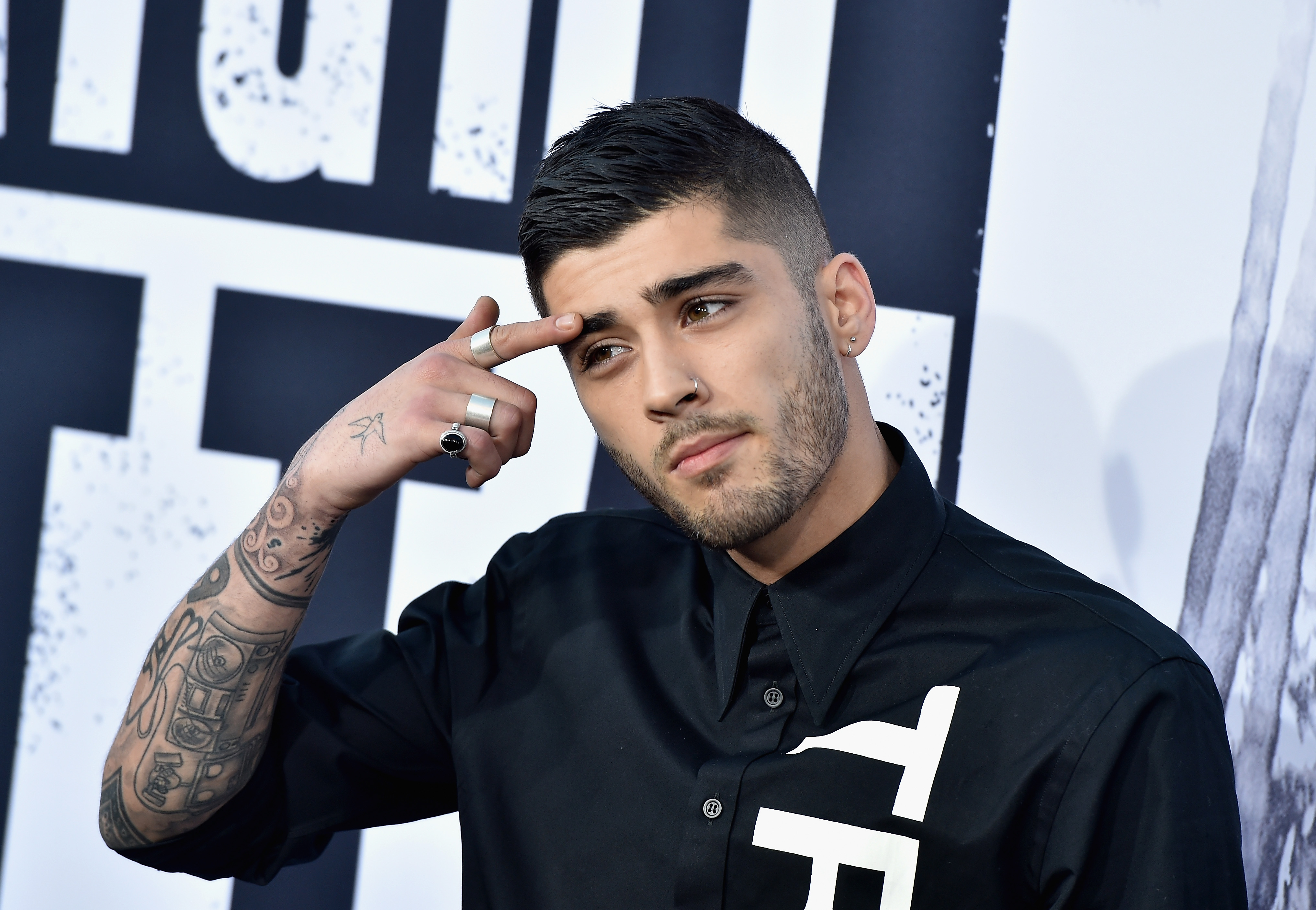Zayn Malik is featured in the December issue of British Vogue, where he discusses the things about himself people still seem to find interesting: his relationship with Gigi Hadid, and the mystique of being a rebellious ex-boy band member. Much of the conversation about this profile—even if it happens strictly among enduring One Direction stans—will surely focus on Malik sharing that he “came away from his five years in One Direction without having made a single friend.” But honestly, who cares anymore? The story of Zayn Malik turned out to be a scam, and yet magazines won’t stop selling to us.
One Direction formed in 2010 in London when its members—Malik, Harry Styles, Niall Horan, Liam Payne, and Louis Tomlinson—were grouped together to form a band after each of them failed to make headway in the competition as individual singers. One Direction would quickly grow into worldwide prominence through social media and top the charts throughout their career together, but there was never any doubt that these boys would, despite the genesis of their group, all eventually go solo. Their subsequent careers have been something of a mixed bag. You have Harry Styles, who was tabbed for superstardom but whose glam-rocky self-titled solo album didn’t really move the needle. (At least he was pretty good in Christopher Nolan’s 2017 film Dunkirk.) Louis Tomlinson has released a couple singles that went nowhere, and Liam Payne had a big single, the mostly fossilized “Rack City” rip-off “Strip That Down,” whose success ultimately proved fleeting. Weirdly, the One Directioner with arguably the most staying power proved to be Niall Horan, who beat Styles at his own game with “Slow Hands,” a classic rock-tinged pop song that was one of our favorites of last year.
Then there is Zayn. Back in late 2015, Zayn Malik was on the cover of Fader, in which he gave his first interview since leaving One Direction. The appeal was very obvious: Malik was a tattooed and model-esque man of color in an all-white boy band that he never really fit into, and was now ready to be a solo star. He told the press that the music he was forced to sing in One Direction was basically too corny, in the process positioning himself as a vaguely mysterious R&B heartthrob in the vein of Frank Ocean and The Weeknd. It was, essentially, an updated twist on the Justin Timberlake story, and it was easy to get enamored with the idea of Malik as a new generation’s cool and zeitgeist-y ex-boy bander.
And at first that seemed like our reality. “Pillow Talk,” his first single released early in 2016, was a true hit, and a decent enough song to boot. Alas, that is basically the peak of the Zayn experience. His debut album Mind of Mine would go on to debut at No. 1 on the Billboard charts—it was pre-ordained—but it was met with very tepid reviews, including from us. And while “Pillow Talk” was by all metrics a success, the other singles released from the album would not do as well, even over in the U.K. Since then, Malik has released a series of singles you almost certainly don’t remember: “Still Got Time” with Partynextdoor and “Dusk Til Dawn” with Sia both had brief moments in the sun before fizzling. After that came “Let Me,” “Entertainer,” “Sour Diesel,” and “Too Much” with Timbaland—all of which were largely ignored and which most likely explain why Malik’s second album does not seem close to materializing. Also, let’s not forget that ghastly Beyoncé cover of his that got him rightly mocked.
Despite all of this, Zayn’s continued residence on major magazine covers across the world—he was plastered across GQ just this past June—would lead you to believe that the narrative we were sold back in 2016 had actually come true. There are cracks visible, though, as you start reading. These profiles focus not on music—at this point, really, why would they?—but instead on the same basic facts of his intractable celebrity: that he is very beautiful, dresses cool, dates a supermodel and used to be in that very famous band, but is also a hip, mopey, mysterious persona that is reluctantly famous. Whatever intrigue or insight was to be gained from the Zayn story has long been strip-mined, and so I implore my fellow media members: if you want to run pictures of Zayn Malik being pretty inside your magazines go for it. But until he actually becomes an artist worth listening to, he doesn’t need any more covers.





